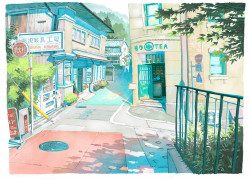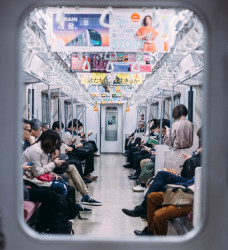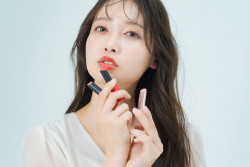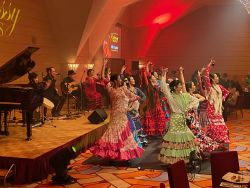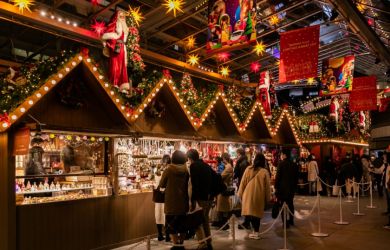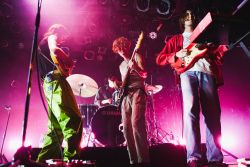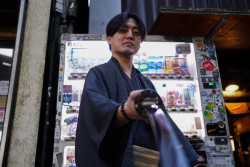
Originally published on metropolis.co.jp on December 2012

One of the problems faced by Japan’s rich ukiyo-e heritage of woodblock-print art is that it tends to get pushed into an historical ghetto. Because these colorful prints were so much the product of a society swept away by the Meiji Revolution, it is often assumed they have little relevance to the modern world.
Subtitled “From Ukiyo-e to Japanese Modern Paintings,” this exhibition, however, has a clear intent to link the great 19th-century woodblock master Utagawa Kuniyoshi with subsequent generations of Japanese artists, both nihonga- and Western-influenced.
Kuniyoshi’s oeuvre certainly offers scope for daring reinterpretations. There is a polymorphous quality to his art, with themes ranging from the banal and comedic to the ghostly and legendary, such as the stunning Miyamoto Musashi Kills an Enormous Whale (c. 1847).
Of particular interest are his bijinga (pictures of renowned beauties), which went on to influence other artists included in the exhibition, like the 20th-century nihonga artist Shinsui Ito, and Paul Jacoulet, an openly gay French woodblock artist who spent most of his life in Japan.
The diversity of Kuniyoshi’s subject matter took a boost when the late Edo Shogunate government cracked down on bijinga as a sign of decadence. This censorship sent Kuniyoshi’s creativity spiraling in a number of directions, including, according to this exhibition, well into the future.

